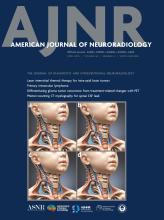This article requires a subscription to view the full text. If you have a subscription you may use the login form below to view the article. Access to this article can also be purchased.
SUMMARY:
The Canadian Cervical Spine Rule, a clinical decision-making tool for patients post-trauma, is often interpreted as recommending cervical spine CT in patients ≥65 years old, who sustain a dangerous mechanism of injury, and/or have extremity paresthesias. We retrospectively reviewed 6 years’ of emergency department cervical spine CT reports to determine fracture rates in patients ≥65, symptomatic or not, who did and did not have a dangerous mechanism. Of those ≥65 years old, 240 of 13,925 (1.72%) patients had cervical spine fractures. The fracture rate in asymptomatic patients ≥65 was 0.27%. The fracture rate in asymptomatic patients ≥65, who did not have a dangerous mechanism of injury was 0.15%. The rate of unstable fractures requiring surgery was 0.007%. The findings suggest that the algorithm to scan asymptomatic patients ≥65, and/or those ≥65 without a dangerous injury mechanism, should be revisited for appropriateness and overall value.
ABBREVIATIONS:
- CCR
- Canadian Cervical Spine Rule
- CSCT
- cervical spine CT
- ED
- emergency department
- EMR
- electronic medical record
- EMS
- emergency medical service
- MVC
- motor vehicle collision
- © 2025 by American Journal of Neuroradiology












